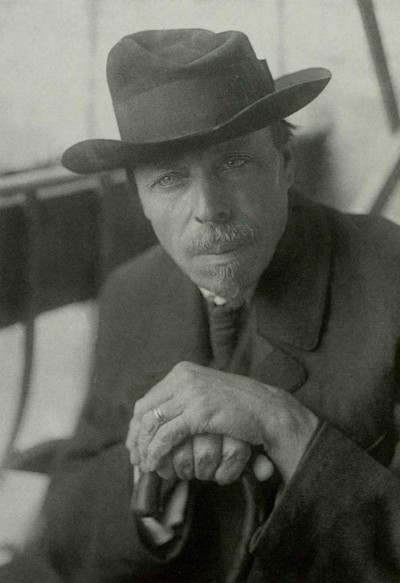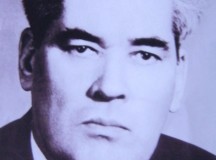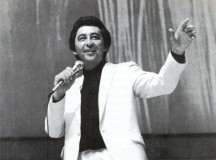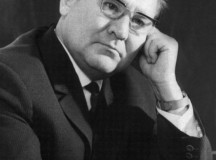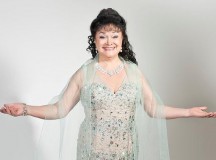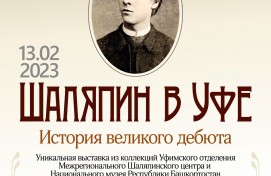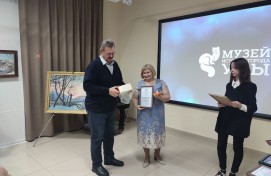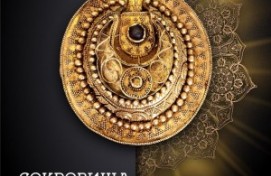Нестеров Михаил
Mikhail Nesterov is the master of monumental painting and lyrical landscape, and a portraitist. His works are very special. In search of spiritual and ethical ideal at some point of his career he turned to the epitome of enlightened and pure beauty of a human soul that was trying hard to avoid the hustle and bustle of the secular life. Quiet contemplation, peacefulness and the emotional role of the landscape of these works contributed new poetical notes to the Russian painting.
Mikhail Vasilyevich Nesterov was born into the family of a merchant on May, 1862 in the city of Ufa in the Urals, Russia. In 1874, his parents brought him to Moscow to study in a technical college, where he caught the attention of K. Trutovsky, an artist and inspector of the Moscow School of Art. This was an important meeting, the turning point in his life. In 1876 on the recommendation of K. Trutovsky he entered the Moscow School of Painting and Sculpture; he studied in the classes of Perov, Savrasov and Pryanishnikov, well-known Russian painters. In 1881, he entered St. Petersburg Academy of Fine Arts, the studio of professor Pavel Tchistyakov (1881-84); actively participated in the Itinerants’ Society of Traveling Exhibitions (the society that organized the traveling exhibitions throughout the whole Russia).
First he tried himself in the genres of historic and everyday scenes, but later, in the 1890s, he became interested in religious themes. In technique his religious pictures are much influenced by style modern (art nouveau). There is a lyrical note in his every work, and interest to landscape. He was very much affected by the beauty of the pure Russian soul, and it was at this point that he strived to find an ideal. Such ideal is personified in one of his most poetic works that is now in the Russian Museum – Taking the veil. The girl that is on the foreground is so tender and pure that she can only be compared to light breeze, a candle that is in her hands, or a forest brook running amid trees…
In the 1890s-1900s, he created paintings in the Vladimir Cathedral in Kiev, mosaics in the Cathedral of the Resurrection of Christ in St. Petersburg, paintings in the Church of Alexander Nevsky in Abastuman, Georgia (1899-1904), frescoes in Marfo-Mariinsky Cloister in Moscow (1907-11). His other works of the period are also connected with religion: Hermit (1889), Vision to Youth Bartholomew (1889-1890), Youth of Saint Sergey Radonezhsky (1892-1897), Tzarevich Dmitry (1899),Philosophers (Portrait of Pavel Florenskiy and Sergey Bulgakov) (1917), Archbishop (Portrait of Antoniy Volynskiy) (1917) and many others.
His picture Tsarevich Dmitry which is now in the Russian Museum is painted not only to the religious but also to a historical subject. Dmitry was the youngest son of Ivan IV the Terrible, and was thought to be killed while still a child by Boris Godunov who allegedly wanted to get rid of the last heir to the throne and ascend it himself. It was not proved, though, whether it was Godunov who killed Dmitry or the child died of natural reasons, but people blamed Boris. Nesterov depicted an innocent child who had been tortured by evil people and who afterward appeared near one of the monasteries in Uglich where he died. The painting strikes as very emotional and mysterious. God is looking down upon the tsarevich and blesses his soul from above…
In 1885, Nesterov married Maria Ivanovna Martynovskaya. Unfortunately, she died next year after giving birth to their daughter, Olga. “The death of Masha made me an artist”, Nesterov wrote later. His paintings, which according to his own judgment had lacked feeling, now obtained it. From now on he depicted moods, not events. One of his most lyrical works is Portrait of Olga Nesterova, the artist’s daughter, known as Woman in a Riding Habit (1906), which personifies a typical Russian girl from an upper-middle class family, and also Nesterov’s longing for an ethical ideal. Olga wrote afterwards that she was never the ideal girl her father depicted. This painting which is among Nesterov’s masterpieces is the pearl of the Russian Museum collection.
In the late period of his work which was connected with the changing of epochs, tastes and criteria, Nesterov was totally concerned with the image of a person. So in the “Soviet” period Nesterov paints portraits, mostly of his colleagues, Portrait of Ivan Shadr(1934), Portrait of Vera Mukhina(1940) etc. There are several interesting portraits of outstanding people of his time: Portrait of Sergey Yudin (1935), Portrait of Ivan Pavlov(1935), etc.
The main accent is made on the richness of spiritual life, creative burning and intellectual concentration of a hero, emphasized by the perfection and harmony of the form, flexibility of expressive means.
Mikhail Nesterov also painted icons. In the Orthodox Assumption Cathedral in Helsinki, Finland, there is a very special icon painted by him – Our God Mother of Kozelsk. It is decorated with river pearls. It’s considered to be wonder-making, and is the most sacred thing of the cathedral. If ever you wish to make a trip to Finland with us, which we can arrange on your request, I will take you to the Assumption Cathedral that is in the very heart of the Finnish capital, and show the icon painted by this outstanding artist to you.




